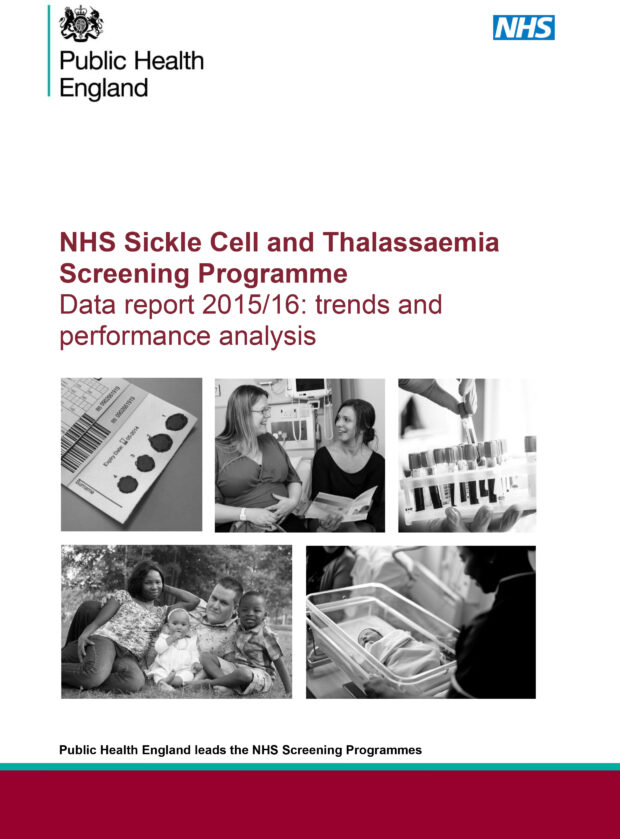We have published the annual data report for the NHS Sickle Cell and Thalassaemia (SCT) Screening Programme covering 1 April 2015 to 31 March 2016.
This report evaluates the performance of the programme. It includes data from screening laboratories across the different stages of the screening pathway, including:
- antenatal screening
- prenatal diagnostic (PND) testing
- newborn screening
- key performance indicators (KPIs)
The SCT antenatal programme screens pregnant women to find out if they’re at risk of having a baby with sickle cell disease or thalassaemia major, which are serious inherited blood conditions. This gives parents time to consider the options available.
The SCT newborn programme screens newborn babies to improve infant health through prompt identification of affected babies and timely transition into clinical care.

Headline figures
Numbers screened and detected
Approximately 706,000 women were screened antenatally between 1 April 2015 and 31 March 2016. Of them, just under 14,000 were reported to be screen positive (1 in 51 samples screened).
There were 407 PND tests, which represents about half the number of couples at high risk of having an affected pregnancy.
Just under 670,000 samples were screened as part of newborn screening for sickle cell disease. Of these, 265 (1 in 2,520) were identified with significant conditions and approximately 8,600 (1 in 78) were identified as carriers.
Early testing
Early testing in antenatal screening is important as a series of tests may be required in order to offer women and couples informed choices.
KPI data shows that just over half of all pregnant women are being screened by 10 weeks' gestation. Rates appear to have been steady over the past 2 years in most regions but there has been a decline in London where the prevalence of sickle cell disease and thalassaemia is highest.
In the last 2 years, 40% of PND tests were performed by the 12 weeks plus 6 days standard, representing a fall of around 10% on previous years.
10 years of newborn screening
This year marks the 10th anniversary of the full roll-out of newborn screening in July 2006. This report includes some figures to show the numbers screened and detected in the 11 years since data collection began in 2005.
During this period:
- 7.3 million babies were screened
- about 3,600 babies were identified with significant conditions (1 in 2,000 babies screened)
- about 101,000 babies were identified as carriers (1 in 72 babies screened)
We would like to thank all those who submit data and make it possible to produce these reports. We would also like to thank all the healthcare professionals who work hard to ensure that women and their families experience a high quality screening programme.
PHE Screening blogs
PHE Screening BLOGs provide up to date news from all NHS screening programmes – replacing our previously published newsletters.
You can register to receive updates direct to your inbox, so there’s no need to keep checking for new blogs.